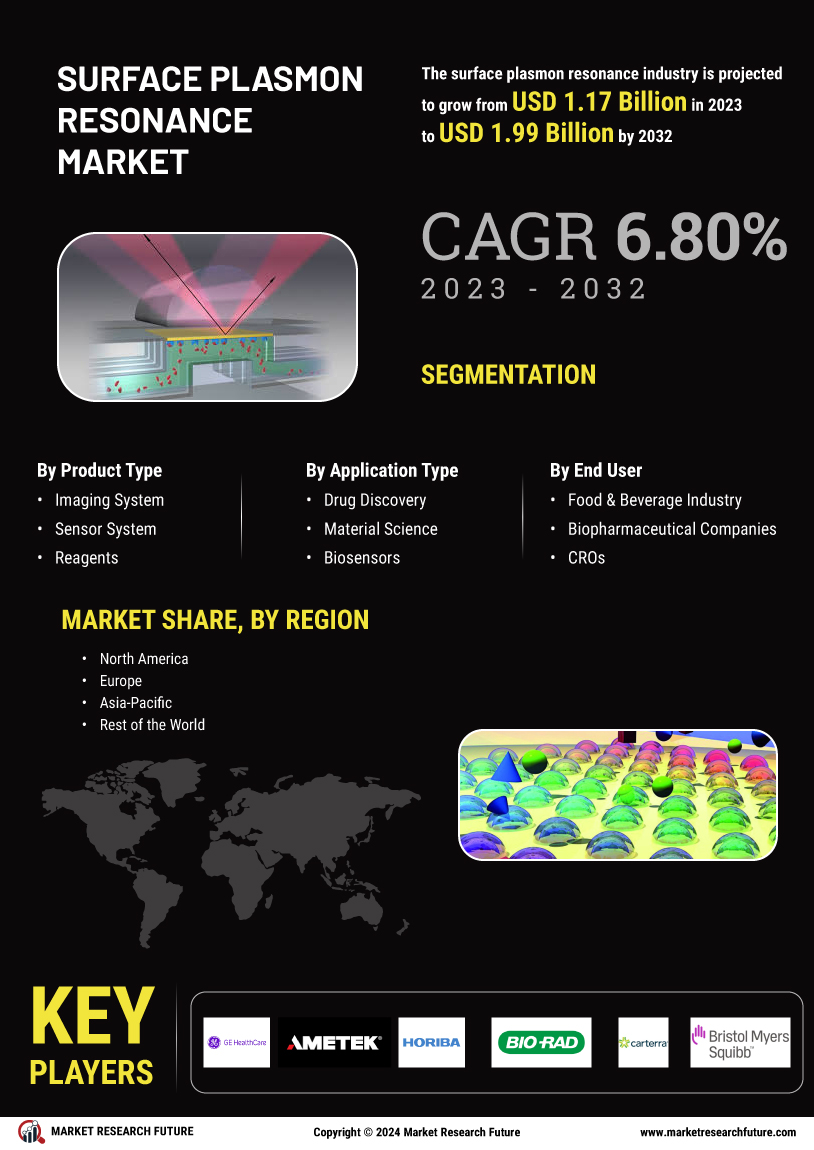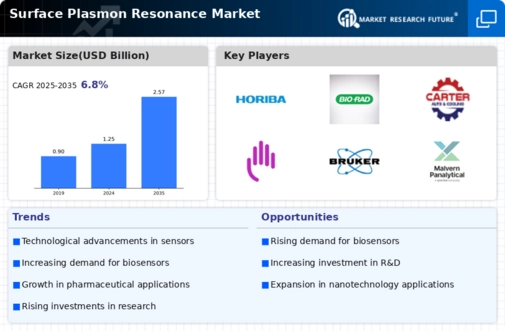Rising Focus on Personalized Medicine
The Surface Plasmon Resonance Market is increasingly influenced by the rising focus on personalized medicine. As healthcare shifts towards tailored therapies, the need for precise biomolecular interaction analysis becomes paramount. SPR technology offers the capability to assess the binding characteristics of therapeutic agents with high accuracy, facilitating the development of personalized treatment plans. This trend is further supported by the growing prevalence of chronic diseases, which necessitates individualized approaches to treatment. The market for personalized medicine is projected to grow significantly, potentially reaching USD 2 trillion by 2030, thereby driving the demand for advanced SPR systems that can support this paradigm shift in healthcare.
Increasing Applications in Drug Development
The Surface Plasmon Resonance Market is witnessing a notable increase in applications within drug development processes. Pharmaceutical companies are increasingly utilizing SPR technology for high-throughput screening of drug candidates, which accelerates the discovery phase. The ability to monitor real-time interactions between drugs and their targets is invaluable, as it provides insights into binding kinetics and affinities. This trend is supported by the growing investment in biopharmaceutical research, which is expected to reach over USD 300 billion by 2026. As a result, the demand for SPR systems is likely to rise, as they play a crucial role in optimizing drug formulations and ensuring efficacy and safety in clinical trials.
Expansion of Research and Development Activities
The Surface Plasmon Resonance Market is benefiting from the expansion of research and development activities across various sectors. Academic institutions and research organizations are increasingly adopting SPR technology for fundamental research in biochemistry and molecular biology. This trend is evident in the rising number of publications and patents related to SPR applications, indicating a robust interest in the technology. Furthermore, government funding for scientific research is on the rise, with many countries allocating substantial budgets to support innovative projects. This influx of resources is likely to enhance the capabilities of SPR systems, making them more accessible to researchers and thereby stimulating market growth.
Growing Demand for Point-of-Care Testing Solutions
The Surface Plasmon Resonance Market is experiencing a growing demand for point-of-care testing solutions. As healthcare systems strive to improve patient outcomes through rapid diagnostics, SPR technology is emerging as a viable option for on-site testing. The ability to deliver quick and accurate results is particularly beneficial in emergency settings and remote locations. The market for point-of-care testing is projected to expand significantly, with estimates suggesting it could reach USD 50 billion by 2027. This trend is likely to drive innovation in SPR systems, as manufacturers seek to develop compact, user-friendly devices that can be deployed in various healthcare environments.
Technological Advancements in Surface Plasmon Resonance
The Surface Plasmon Resonance Market is experiencing a surge in technological advancements that enhance the sensitivity and specificity of biosensors. Innovations in optical design and materials science are leading to the development of more efficient SPR systems. For instance, the integration of nanomaterials is improving the detection limits of these sensors, making them suitable for a wider range of applications, including drug discovery and biomolecular interactions. The market for SPR systems is projected to grow at a compound annual growth rate of approximately 10% over the next few years, driven by these advancements. Furthermore, the introduction of portable SPR devices is likely to expand the market reach, allowing for on-site testing in various fields such as environmental monitoring and clinical diagnostics.


















Leave a Comment